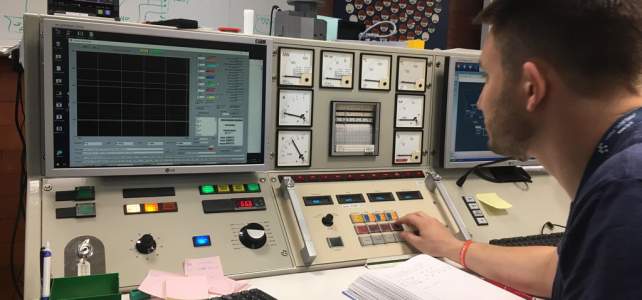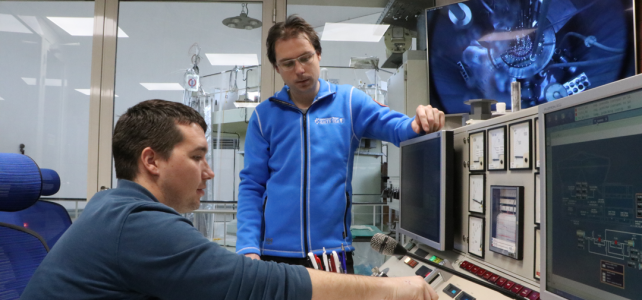Purpose of experiment
The pulse experiment is a demonstration of a reactor transient in a supercritical state, made possible by the inherently safe design of the TRIGA reactor. The aim of the experiment is to perform several pulses by rapidly withdrawing a control rod, measuring basic pulse parameters and experimentally validating the Fuchs-Hansen model.
Outcome / What you will learn
-
observe and understand the reactor response to a large sudden reactivity increase following the ejection of a control rod out of the reactor core
-
experimentally verify the physical models describing the pulse experiment (the Fuchs-Hansen model)
Execution
After a discussion on the temperature reactivity effects and the Fuchs-Hansen model, students observe the behaviour of the reactor power and fuel temperature following sudden large insertions of reactivity, caused by the ejection of a control rod out of the reactor core. Students measure three pulse parameters: the maximum power, released energy and maximum fuel temperature, and observe their dependence to the prompt reactivity, thereby experimentally validating the Fuchs-Hansen model.


